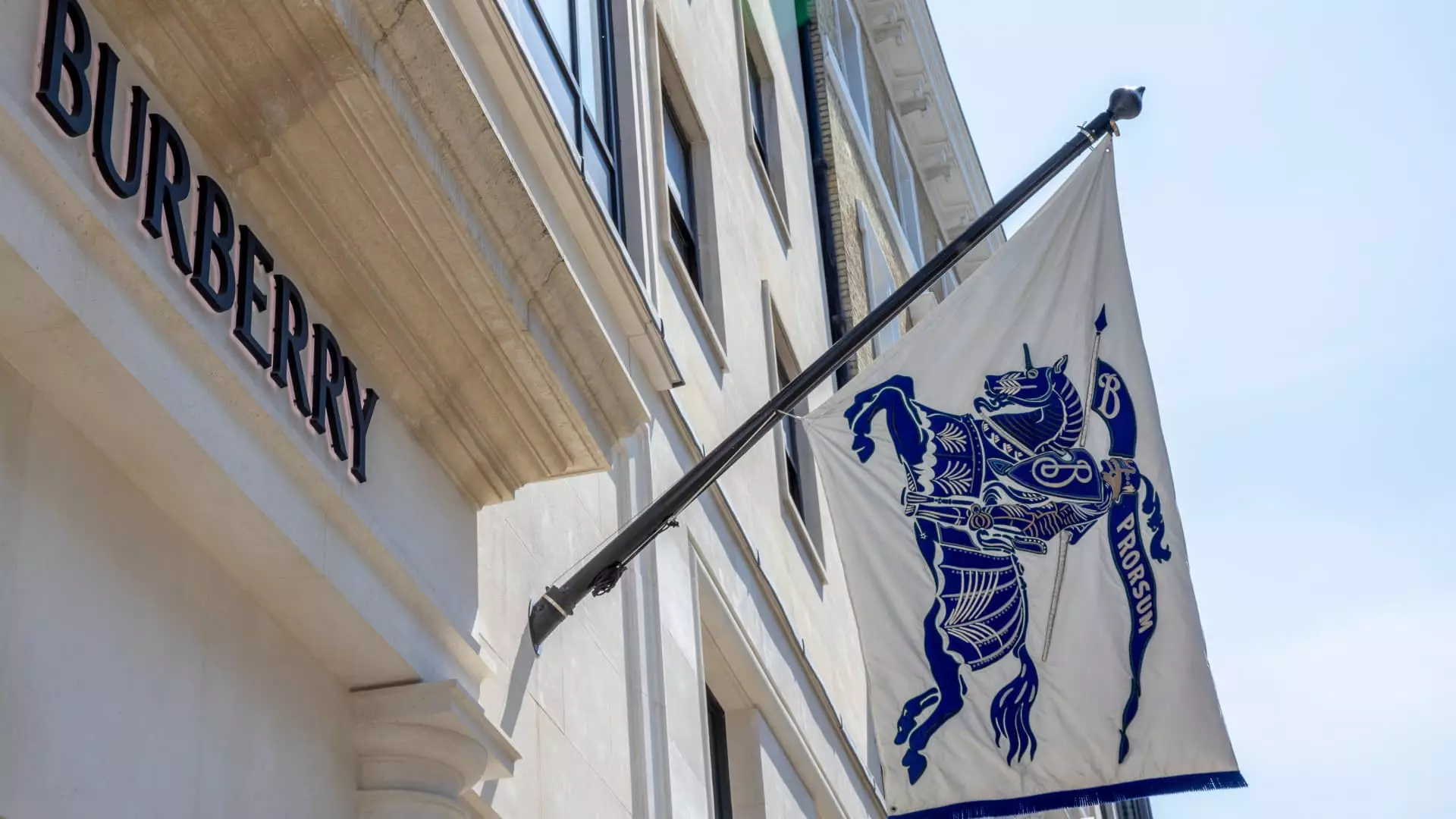Burberry has recently embarked on a daring journey of organizational restructuring, aimed at reinvigorating its faltering luxury brand. On the surface, such radical changes, which may eliminate approximately 1,700 jobs by 2027, appear necessary for survival in today’s cutthroat market. However, one must wonder whether slashing personnel is truly the most prudent strategy for a luxury brand so deeply entrenched in its heritage.
There’s a fine line between operational efficiency and brand integrity, and Burberry is currently teetering on the precipice. The decisions to streamline operations should not come at the expense of the human workforce that creates the very luxury experience Burberry sells. While maximizing shareholder value is essential, a luxury brand that dismisses its artisans and frontline staff risks losing the unique appeal that separates it from fast fashion competitors.
Sales Figures: A Mixed Bag of Results
Examining recent sales figures only adds to this narrative of uncertainty. A mere 6% dip in their fiscal fourth quarter was better than analysts’ predictions of a 7% decline. Nevertheless, a deeper analysis reveals troubling signs: a collective 12% drop in sales for the fiscal year signals a brand struggling to maintain its relevance and allure. When significant markets, such as Asia-Pacific and even the previously stable Americas, report downturns, it raises critical questions about Burberry’s brand positioning amid shifting consumer sentiments.
While the CEO, Joshua Schulman, expresses optimism regarding future growth, the constant reference to a “difficult macroeconomic environment” feels like a rehearsed narrative intended to placate stakeholders. Is the situation really a temporary setback, or is it an indication of deeper, systemic issues? One cannot help but be skeptical of the notion that Burberry’s “best days are ahead” while witnessing consistent declines across crucial markets.
Geopolitical Tensions: An Unprecedented Challenge
What complicates matters further is the cloud of uncertainty stemming from geopolitical tensions. With potential tariff increases looming, Burberry, like many global brands, is particularly vulnerable. The luxury market thrives on the perception of exclusivity, yet threats like these suggest that external factors are encroaching upon the sanctum of high fashion. The suggestion that Burberry faces “incremental unmitigated tariff risks” introduces an unsettling layer of complexity to their ongoing turnaround efforts.
Let’s not mince words: while other brands are learning to navigate these turbulent waters, Burberry seems stuck in an archaic cycle of restructuring aimed at cutting costs rather than innovating authentically.
Cultural Integrity in the Face of Change
As a brand with a rich cultural history, any corporate maneuver must prioritize preserving Burberry’s essence. The luxury consumer is not swayed solely by numbers; they crave a connection to the brand’s story. To simply reshape the organizational framework while disregarding the emotional investment consumers have in Burberry might be a grave miscalculation.
Luxury isn’t just about opulence; it’s about creating narratives that resonate. As Burberry trudges through this uncertain path, it must remain aware that its future flourishing hinges not only on the balance sheet but also on nurturing its legacy and cultural roots. In this dance of cost-cutting and reimagining, Burberry must ensure that it does not lose sight of what truly defines it: an unparalleled commitment to craftsmanship and a connection to its discerning clientele.

